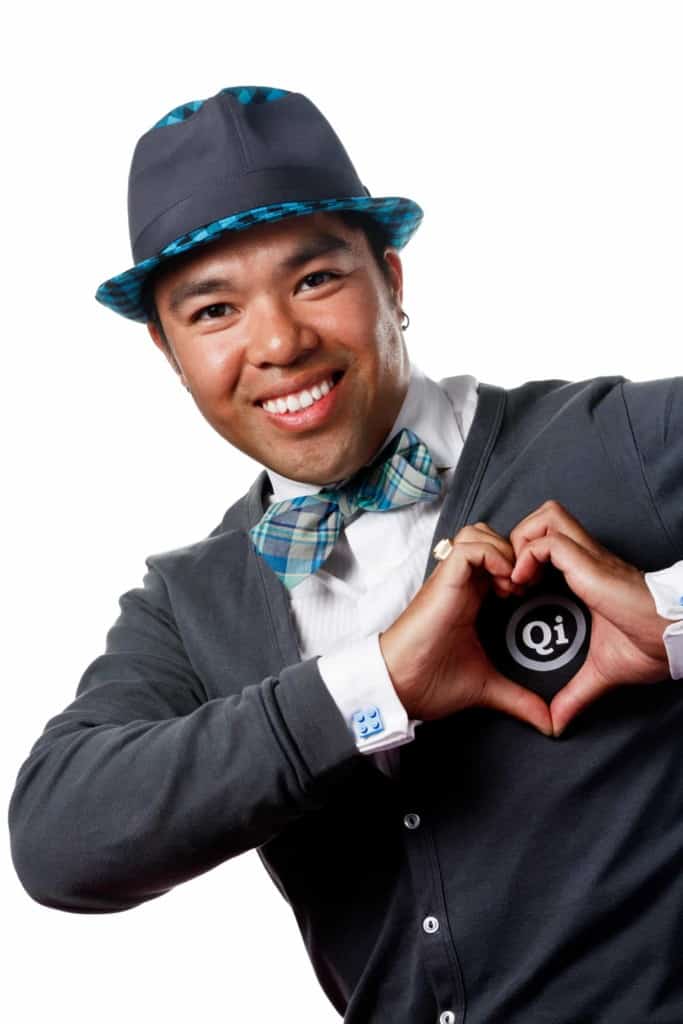Healing trauma with creative interventions
Workshop offered practical solutions for a misunderstood condition
On Sept. 26, Qi Creative presented an online workshop called My Name is Trauma: creating resilience through play.
Jon Jon Rivero and Paula Audrey Rivero lead a practice called Qi Creative, which focuses on collaborating with children and families living with special needs and trauma; their services also extend to schools. Jon Jon is a trained occupational therapist, an internationally-known professional speaker, and a certified trauma practitioner. Also, this guy can dance! He incorporates his moves into his practice, encouraging clients to dance as a way of accessing and coping with trauma. Paula has a Master’s Degree in Social Work with a clinical specialization and is registered with the Alberta College of Social Work. She is also a certified trauma practitioner. She is passionate about leading with love to create connection and a sense of belonging for all people. She believes that all people have strengths and talents that make them awesome and that everyone’s awesome is worth celebrating!
Jon Jon and Paula wrote My Name is Trauma, a picture book that helps traumatized children understand they are trauma survivors. Its goal is to validate their experience so they can begin to learn ways of recognizing and responding to trauma stored and expressed in the body.


Traumatized children act out in ways others may not understand. When triggered, traumatized children may become angry or anti-social. They may completely shut down and retreat from stimulation and engagement. Jon Jon and Paula teach that those behaviours are signals of something going on underneath the surface, using an iceberg metaphor. Where we only see the tip of the iceberg (the behaviours), the bulk of who we are and what drives those behaviours is hidden from view.
In order to heal, children need to externalize trauma. We don’t need to understand the source of trauma for healing. “Trauma resides in the body, and is stored as implicit memory, the sensations of trauma,” says Jon Jon. The child might have experienced trauma directly, or have been a witness to an upsetting event.
In order to externalize trauma, they represent it as a tiger that lives inside the child. When the tiger is calm and regulated, the tiger is shown as sleeping. When it awakens, it can be scary and aggressive, dysregulated. The book teaches children that their tiger protects them. Their problematic behaviours were necessary for survival in the face of trauma, like a fierce tiger fending off danger.
“It is hard to be our best selves,” says Paula of trauma. “[Trauma] is not only confusing for others, it is confusing for us.” Paula adds, “A child may not be a ‘bad kid’. It may be that they are a hurting individual who comes to [us, at school, for example], to be loved.”
The team at Qi Creative teaches children to recognize that tiger. They may notice their heartbeat increasing, for example. Once they can recognize the physical signs of trauma, they can begin to calm the tiger, and to heal.
The best way to access and heal trauma is through the senses and using creative interventions.
To heal, a child needs a sense of safety and security. The team at Qi Creative teaches children to find their safe place. One way can be through smell, the only sense directly connected to implicit memory. A smell that brings the child to a happy memory can become part of a healing toolkit. Children are encouraged to carry an object that smells like their happy place. It is unique to each person, like cookies baking, or lavender. In a safe place, the child can validate their feelings and become more mindful.
Once the child feels safe, the focus shifts to rerouting neural pathways in the brain through patterned motions and specific stretches that release trauma. This is where dance comes in and can be very therapeutic. Jon Jon and Paula also recommend singing and art therapy.
My Name is Trauma is a powerful resource for helping traumatized children, since it provides a fun and imaginative way to talk about a challenging topic. A great step towards creating resilience.
CORRECTION
There were a number of errors in the November 2020 issue, on page 14 of the article “Healing trauma with creative interventions.”
Most notable is that the print article should state that Jon Jon Rivero and Paula Audrey Rivero wrote the picture book, My Name is Trauma. The teachings that come from the book and shared in the workshop are from their collaborative effort, experience, and expertise.
QI CREATIVE
Jon Jon Rivero: jonrivero@qicreative.com
Paula Rivero: paularivero@qicreative.com
Featured Image: Paula Rivero (pictured), who recently co-presented an online workshop, helps bring imagination and fun through Qi Creative. | Supplied







